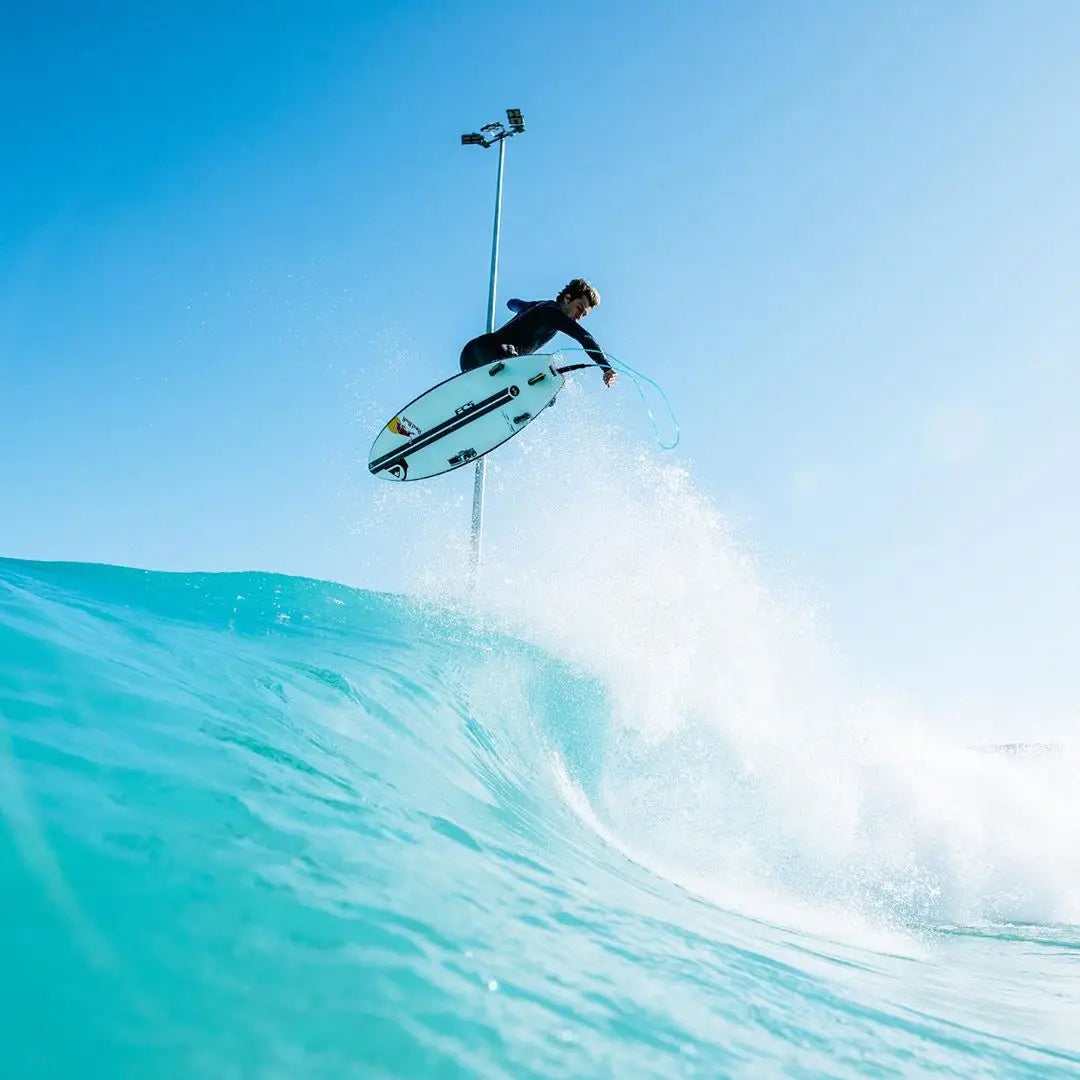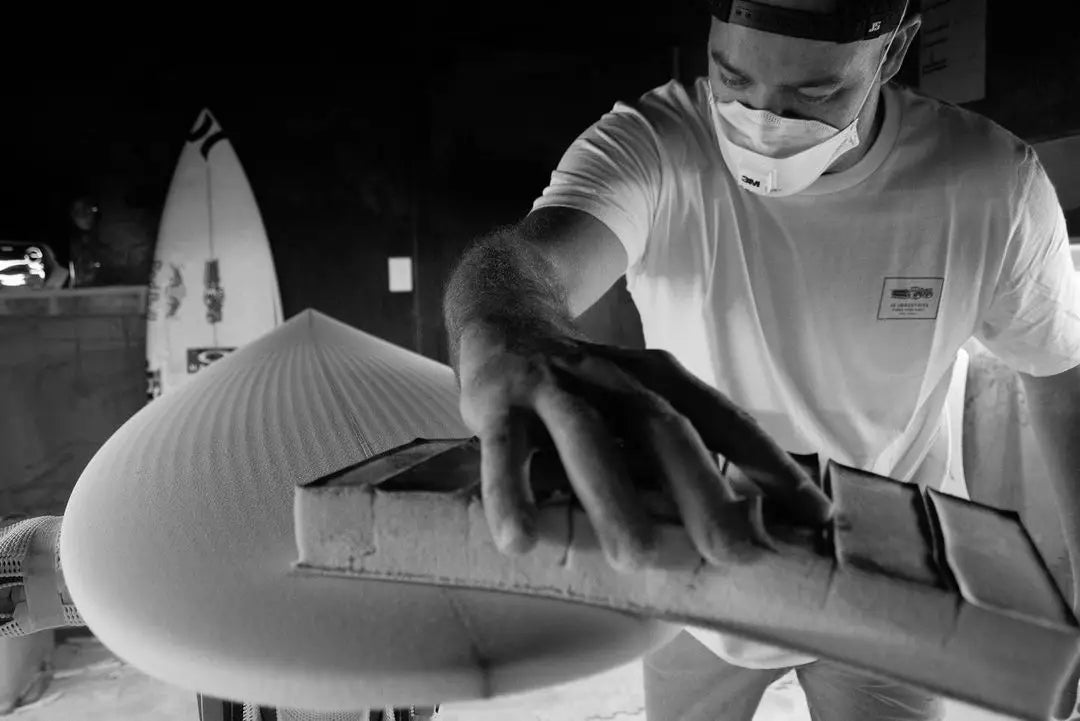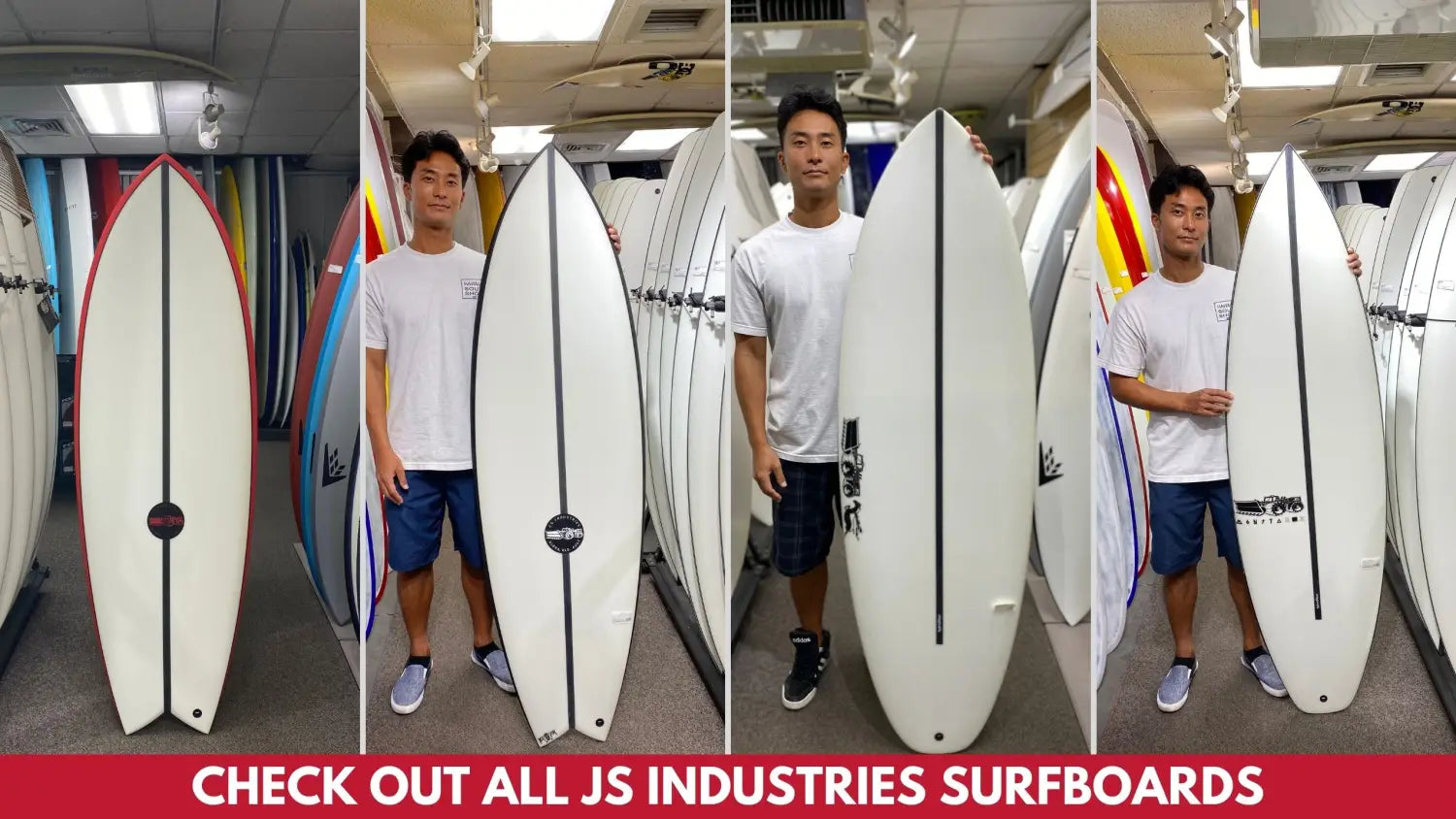Who is Jason Stevenson? An In-Depth Look at Jason Stevenson—the Man Behind JS Surfboards
Share
Jason Stevenson has been a global leader in surfboard design for 20 years, ever since he left DH Surfboards and started his own label. At the beginning, a lot of people said that he might not make it as an independent surfboard shaper, but he had confident in his shapes and abilities, and was friends with a lot of top surfers, and knew that if he stayed true to his designs and talents he could make a go at it.
When he started JS surfboards, Stevenson didn’t want to use his name on the brand. A lot of other big shapers used their names, but Stevenson was a pretty private guy, so he wanted to do something different, that deflected the focus away from him. His father had worked with heavy machinery and Jason had grown up around industry, and as he was looking for a logo, he and his wife bought a bunch of Caterpillar tractor toys from a toy store and took a bunch of photos, and ended up really liking one. That “Traktor” became the logo for his brand.
Early on, Stevenson knew that he would need some big-name athletes to give his brand credibility. At the time, Luke Egan was ranked number two in the world, having just finished a close title race with Andy Irons. Luke had seen a few boards that Stevenson was shaping for a young Dean Morrison, and came in one day and asked Stevenson to shape him some boards.
That was a scary time, at first, because Stevenson felt that the pressure was on.

But it was also the opportunity that he needed to really showcase his shaping talent, and marked a turning point in the growth of the JS brand. Over the years, JS made boards for many of the world’s best surfers, including Andy and Bruce Irons, Luke Egan, Sunny Garcia, Occy, and Julian Wilson (📷 @badboyryry_), just to name a few. Having constant feedback from athletes of that level allowed him to refine and improve his designs over the years.
Working with top athletes has been an interesting journey for Stevenson, and the relationship with each athlete is different. Some are easy to dial in boards with, while others take some time. The one thing they all have in common is that at the beginning of the relationship, it takes a lot of work to figure out what works for them. JS might make as many as 100 boards per year for the first few years a world tour athlete is with them, but once they get their models dialed in, the process is much less intensive. At that point, it’s just a case of taking the constant feedback from the athletes and refining their boards to fit.
Andy Irons was an interesting case, as he always thought everyone else’s boards were better than his. He even claimed Stevenson’s personal board as his own during a session at Greenmount, and ended up taking that board on tour with him and winning an event on it! Andy was always confused about boards, and always sure that other boards were better, which is why JS called Andy’s model the “Confusion Model.”
Although JS makes some of the best high-performance boards for world-class surfers, the brand is also very focused on making boards that work for the average surfer. Stevenson thinks of his high-pro boards as Formula One racecars, which are great for elite athletes, but not appropriate for everyday use. He takes the DNA of these boards, and the feedback from his team riders, then tweaks them to his own needs and the needs of other average surfers to make boards that are user-friendly and fun for everyone.

Photo credit to @jsindustries1
Stevenson has long been a proponent of machine shaping, and has been closely involved in the technology for years. He owns his own shaping machines, has helped to design upgrades to the machines, and of course designs the board shapes that go into the computer software. That, combined with new board building materials, has resulted in a line of cutting-edge, world-class boards, both in polyurethane and epoxy. Bio-resins and EPS foams offer more environmentally friendly construction, and epoxy boards are proving to have advantages in specific conditions, such as wave pools. But polyurethane boards are still preferred in raw, open-ocean waves, and a lot of top world tour surfers are still finding success on polyurethane thrusters.
At the end of the day, it doesn’t really matter what you ride or what it is made from—from high-performance epoxy thrusters to polyurethane retro twin fins—what matters is that your boards are performing for you, elevating your personal surfing level, and helping you have the most fun possible. As a surfer himself, that’s JS’s ultimate goal—to put us all on boards that help us stay in love with surfing.



